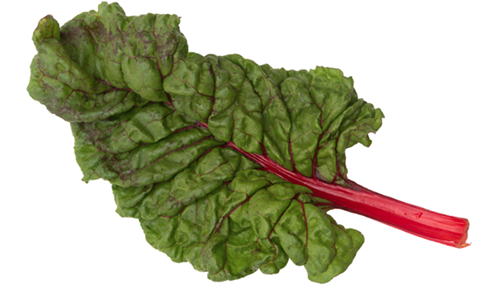
Also known as "Rhubarb Swiss Chard." This variety features large, green crinkled leaves with deep red veins and stems. Delicious, highly nutritious, and easy to grow! This beautiful plant looks great in the garden and on your plate.
Young leaves are great for salads. Larger leaves can be steamed, stir-fried, added to lasagna, omelets, soups, and stews, and mixed with other greens.
Start seeds outdoors in early spring to summer. This variety does better directly in the garden but may be planted in a container, too. Prefers direct sun and regular watering. Chard is a cool weather vegetable and may withstand a very mild frost. Acidic soil will stunt growth.
Begin harvesting outside leaves when plants are 6-8" tall.
Pick up to 1/3 of the outer leaves as needed, and let more leaves grow from the center of the plant; or, if desired, harvest the whole plant 2" above ground, and it will grow back. Pick very young leaves, at 2-4" for using fresh in salads.
Since swiss chard is wind pollinated, be sure to separate from other varieties of chard and beet by at least two miles to preserve genetic purity. Chard plants must weather the winter in order to produce seed. Dig up the roots and store them in sand, without the roots touching, in a cool and humid location; replant in early spring and the plants will go to seed. Wait until seed heads are fully grown and dry before removing them. The seeds will readily come off the stems after they are completely dry. Store seeds in a cool, dry place for up to 5 years.